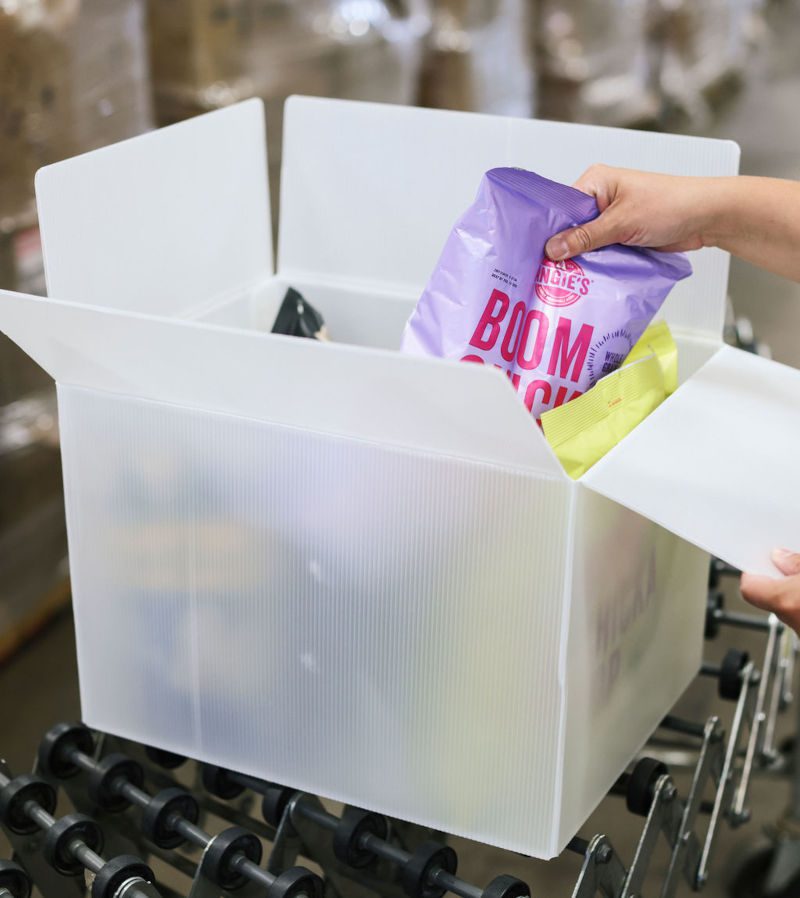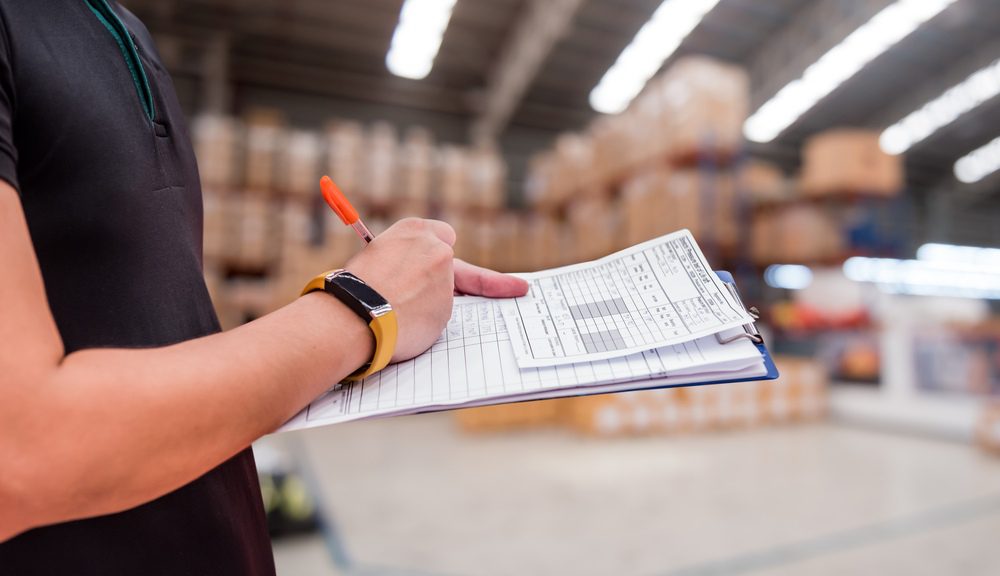Every company that stores products experiences an iteration of product damage in warehouses or warehouse environments. Companies try to reduce it as best they can, but some breakage will happen.
Much of it, however, is avoidable. Using substandard storage products, piling boxes on top of each other, and mishandling items and working machinery contribute to product damage in warehouses.
The trick is to do all possible to reduce loss without sacrificing productivity or reducing available square footage for storage. Let’s talk about why it matters and a few suggestions to reduce product damage in warehouses.
Why Is It Important to Reduce Product Damage in Warehouses?
Product damage is lost revenue. Most customers won’t buy a damaged item and the ones who do typically request a discount. When the damage occurs at the warehouse, it may not even make it to customers, meaning it’s a total loss. While one or two items might be easy to overcome, several damaged products can add up to significant losses.
Damaged products laying around also makes your business look bad. While it’s unlikely that people will walk through and notice all of the damaged items, it might upset your clients and suppliers to receive them. You could even lose business partners.
Further, having damaged items around your warehouse could be unsafe for your employees. Depending on the items, the damaged goods could create a hazard and injure one or more team members.
Train Your Employees
Do your employees know how to stack boxes? How about building and using shelving? Are they able to effectively move products around the warehouse?
Incorporating safe product handling techniques during employee onboarding is a key to reducing product damage in warehouses. Reinforcing proper material and machine handling includes the following:
- Teaching them how to store inventory correctly
- Training them in using manual and motorized machinery
- Instructing them in safe transport practices
- Working with them to recognize potential accidents and product damage
It also helps to follow-up on best practices and encourage employees to provide feedback on existing layouts and organization based on their day-to-day tasks. Your team may need to reevaluate organizational tactics and re-train staff when changes are necessary.

Inspect Pallets
Pallets make it easy to stack products and move them around, but only if they are in working order. Imagine moving a large quantity of items only to have the pallet break in half. That’s a sure way to lose a lot of product, and it’s completely avoidable.
Whenever your team empties a pallet, they need to inspect it for cracks, loose nails, and signs of contamination. These faults could damage your product and your employees, so it’s crucial to remove or repair any faulty pallets.
Additionally, make sure that items are properly stacked and secured on pallets before attempting to move them.
Clean Up and Reorganize Your Warehouse to Reduce Loss
Warehouses are, by nature, cluttered. Anything with thousands of individual parts will be cluttered. This environment creates tripping, storing, and transporting hazards. Other warehouse risks are slippery floor surfaces that can lead to falls. A third issue is forcing those transporting products to navigate a maze to reach their storage destination.
Clutter
A cluttered warehouse invites an employee to trip and drop products, damaging them. Cluttered aisles block the safe transport of items and increase the risk of dropped products. Overstuffed, disorganized shelving also leads to products falling off.
Look for ways to reorganize items, like putting them in totes and bins that keep similar pieces together and organize smaller products. Oddly shaped items might benefit from custom containers that keep them in place and off the floor.
Slipping and Falling
Slick surfaces invite employees to slip and fall, putting their safety at risk and possibly damaging any product they carry. Also, slick surfaces can lead to employees having less control when using manual and motorized equipment, which can lead to damaged products.
Running the Maze
The third risk posed by a dirty or overcrowded warehouse is employees having to maneuver manual and motorized machinery through a maze while carrying pallets full of products. Not only is there a risk the pallet could fall or the product be damaged from colliding with something, but there is also a greater risk that something the employee hits or rubs up against will be damaged.
Inspection and Maintaining a Clean Workspace
Your aisles should be wide, clearly marked, and free of clutter. Shelving should be stored linearly, back to front, bottom to top, to avoid the possibility of products being jammed into place or placed in an aisle.
Your managers should inspect aisles twice each shift and order anything obstructing clear passage to be removed and stored properly.
Add Proper Warehouse Lighting
Warehouses tend to have corners and aisles that are dark. The lighting also tends to be dimmer than other lighting in a building. Darkened aisles and corners, even if they do not qualify as “dark,” are tripping risks and navigation hazards. You do not know what your employees can easily see and what they might overlook because of a darkened corridor.
The more lighting you can add, the better off your operation will be. Lighting makes it easy to see slick spots, spills, and obstacles. It also helps employees see shelving space and how to organize the products on those shelves to reduce drop risks. Finally, lighting lets employees safely navigate without the risk of running into something.
Both of these factors reduce loss. Fewer injuries mean more experienced employees stay on the floor longer. More structured storing means fall and spill risks get reduced, thus reducing product damage in your warehouse.
Avoid Overloading
Even the sturdiest shelving has limits. Often, to save space, employees overload shelving under the assumption that products move off shelves so fast an overloaded shelf will not matter.
That mistake creates a huge risk, especially if you store heavier products on that shelving. As soon as a shelf is overloaded, it poses a collapse risk.
A shelving collapse can damage products, break other shelving, and pose a serious safety risk to your employees. One collapsed shelf alone can do thousands of dollars worth of damage, and that is if what you are storing is not expensive per unit.
If the stored products are expensive per unit, it is easy to quickly cause hundreds of thousands of dollars worth of product damage in your warehouse because of one overloaded shelf.
Utilize Safety Equipment
Safety equipment lets employees work while reducing the risk of injury, yes, but in some cases, it also helps reduce product loss and damage as it performs that role. Safety netting prevents products from falling on employees’ heads, but it also preserves the products by avoiding falling to the floor.
Pallet and shelving column supports help hold up shelving. Additionally, pallet and shelving column supports can absorb impacts from forklifts, pallet movers, and shifting products. Support for our shelving support columns reduces the risk of products falling and getting damaged.
Conveyor Protection
If you use a conveyor system, there are multiple areas where a product can get damaged. One of the most common is products piling up on each other as the conveyor runs. Products can get crushed, scratched, and even pushed off the reception area to the floor depending on what is piling up.
The answer is to install an accumulation conveyor system that holds the conveyor until it is manually released and allowed to move products forward. An accumulation management system transfers the risk of product damage to the front end. Since the front end is usually manually loaded, the risk is more manageable than an endless stream of products running into each other until staff catch up.
In addition to installing an accumulation conveyor system, MDI’s state-of-the-art totes and trays help streamline movement and product safety. Hardboard can also be added to the bottoms of the totes and trays to create less noise during production times.
Realistic Goals
The final suggestion to reduce loss is balancing the need to process products quickly with safety and proper handling. Rushed employees feel like they must, well, rush through things. That can lead to carelessness and products being dropped or stored improperly. Let your employees know that while speed is important, so is preserving the products.

Final Thoughts
Product damage in warehouses can be a significant problem for any business. It can lead to revenue loss and even cause business partners to walk away. Thankfully, there are several easy ways to reduce product damage in warehouses.
Establishing a better organizational system and updating storage systems are excellent steps. It might take a little effort up front, but the payoff when you reduce product damage in your warehouse cannot be underestimated. Contact MDI today to speak with one of our experts about reducing product damage in your warehouse with our industry-leading products.